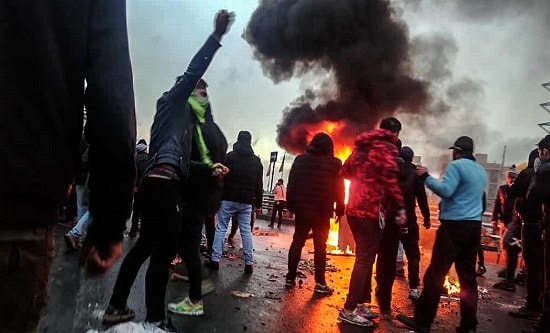
Following protests in Iraq and Lebanon, demonstrators took to the streets across Iran. The trigger for the demonstrations was an Iranian government decision to raise petrol prices by 50% and to put severe restrictions on the amounts of petrol that motorists can buy. Amnesty International reported that between 15 and 26 November at least 143 people had been killed, almost all of them by state forces using firearms. Iranian opposition sources said protests had spread to 176 towns and cities and that at least 450 were killed.
Iranian government ministers and Revolutionary Guard commanders blamed ‘an enemy conspiracy’, accusing the US, Saudi Arabia and Israel of being behind the biggest protests since the so-called Green Revolution of 2009 that followed a disputed presidential election. The government attempted to block access to the internet. It said that extra income would be used to help people ‘under pressure’. US Secretary of State Mike Pompeo welcomed the demonstrations, but they are not by social forces that the US can easily manipulate or infiltrate.
Since May 2018, when the US withdrew from the 2015 nuclear deal with Iran and imposed sanctions, the country’s crude oil sales have fallen from 2.8m barrels per day to 500,000. The exchange rate of the Iranian rial has dropped 60% in this time. Food prices have more than doubled in two years. Iran’s Gross Domestic Product fell by 5% in 2018 and is forecast to fall by a further almost 10% in 2019. According to official statistics, up to 40% of Iran’s 83 million people dropped below the poverty line in the past year. Unemployment is climbing towards 18%. Protesters chanted ‘Unemployment – disaster of the nation’, and condemned the entire Iranian political establishment. These are protests of the poor and the youth who have nothing to gain from alliances with competing factions of Iran’s government and bourgeoisie or from imperialism. They are against capitalism and corruption.
Trevor Rayne
Fight Racism! Fight Imperialism! 273 December 2019/January 2020




